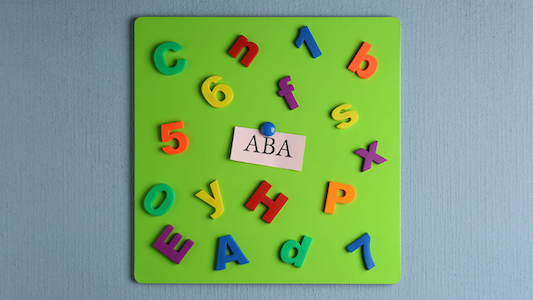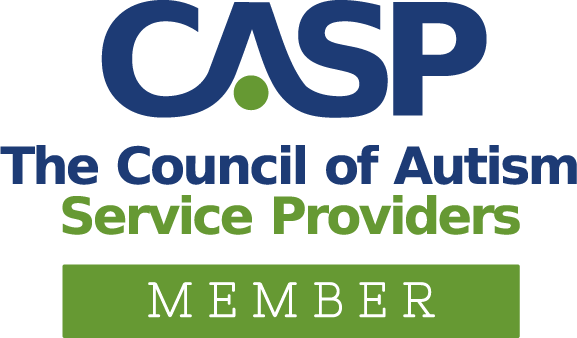Applied Behavior Analysis (ABA) therapy is the only evidence-based treatment for Autism Spectrum Disorder. It’s been the subject of decades of scientific research. ABA therapy is endorsed by the U.S. Surgeon General, Autism Society of America, National Institute of Mental Health and the American Psychological Association. Most insurance providers accept ABA as a treatment for autism. And yet there are still misconceptions about what ABA therapy is and how it works.
Read on to learn all about a few common myths about ABA therapy so you can make an informed decision about your child’s treatment.
1. Myth: ABA Therapy Is Only for Children With Autism
ABA Therapy can benefit anyone. While it’s most commonly known to treat children with autism, its principles are used with people of all ages with autism. It is also not exclusive to people with autism.
Behavior analysis develops socially significant behaviors. Its principles apply to anyone and anything. Recently, behavior analysts have applied these principles to economics, performance management, systems analysis, employee safety, and even health and weight loss. Much of what you do each day likely has some behavior analytic foundation to it.
The goal of ABA is to support all people in accessing the environment in a socially significant way. Whether it is for your child with autism, at work as a construction worker, or while out shopping, ABA is at work.
2. Myth: ABA Therapy Is Only for Children With a Specific Level of ASD
It’s no longer common to refer to those with Autism Spectrum Disorder as “low-functioning” or “high-functioning,” but to dispel this myth, let’s talk about it.
Some people believe that ABA therapy is only for children at one “level” of functioning. Some people think that it’s only for “high-functioning” children, while others think that it’s only for “low-functioning” children. So, what’s the truth?
As we mentioned before, ABA therapy isn’t even exclusive to people with autism in the first place. With that in mind, it’s easy to see that the “level” of functioning that your child displays doesn’t matter.
In addition, ABA focuses on observable, measurable behavior. And that behavior is specific to each individual. “low functioning” and “high functioning” are subjective terms, which is why behavior analysis avoids using those terms. What one person may describe as “high functioning” is not the same as what another person may describe it as. Now, the individual’s specific abilities are used to describe them.
3. Myth: ABA Therapy Is One-Size-Fits-All
Your child is unique, and they need therapy that will suit their unique needs. ABA therapy is individualized. From assessment to treatment, your child’s program will be tailored to their specific social, behavioral, communicative, and adaptive skill needs.
4. Myth: ABA Therapy “Fixes” Autism
There is no cure for autism, and ABA therapy should not be confused as a cure. Although this may seem scary, it isn’t a bad thing. Autism means that your child experiences things differently than neurotypical children, and that’s not something that ABA therapy is trying to remove from them.
Instead, ABA therapy is intended to help children navigate a world that’s hard for them to understand. They’ll learn how to navigate emotions, social situations, and school.
Autism makes your child special. ABA therapy lets your child show the rest of the world how special they are.
5. Myth: ABA Therapy Makes Children Robotic
This is one of the biggest ABA therapy misconceptions. It is based upon a misunderstanding of a treatment strategy used called Discrete Trial Training (DTT). During DTT, therapists use repetition to teach a skill. Those unfamiliar with this procedure see the use of repetition as a way to turn children into “robots.” However, there is one large component of DTT that people don’t understand. Generalization is built into DTT. This means that although a child may learn the skill in a structured, repetitive pattern, they are taught the same skills across different people, settings, and items.
We learn things through repetition each day. Remember learning how to drive? When you don’t want to forget your coffee before you leave for work in the morning, what do you do? It’s likely that you repeat to yourself, “don’t forget my coffee.”
6. Myth: ABA Therapy Is Inconvenient
It is true that the most effective ABA treatment can be time-consuming. It can be inconvenient for busy parents to bring their children to ABA therapy sessions. However, many ABA programs offer both clinic-based therapy and in-home therapy. In-home therapy is a perfect solution for parents who have other children, work from home, or can’t afford to spend excess time away from home.
In-home therapy is also great for teaching children in their natural environments. The therapist is able to see a child’s natural habits and assess their needs based on their life at home.
Good treatment is flexible to the family’s needs. Talk to your child’s ABA therapist about your needs, and they can work around your schedule.
7. Myth: ABA Therapy Uses Bribes to Encourage Children
ABA therapy uses positive reinforcement to encourage children. A child’s preferences are assessed and then used to reward the desired behavior. The child associates receiving this reinforcement with their behavior, and therefore they engage in the behavior more often to receive it.
Imagine going to work and not getting a paycheck. It’s unlikely many people will do that. The paycheck serves as positive reinforcement for doing a good job.
8. Myth: ABA Therapy Punishes Children
This is perhaps the biggest misconception about modern ABA therapy. In the early 1950s, punishment procedures were used in an attempt to change behavior. Since then, much research has been done to shift to the use of reinforcement to change behavior. The field of behavior analysis has developed safeguards to prevent the routine use of punishment in its practice.
Have You Heard These Myths About ABA Therapy?
These ABA therapy misconceptions are harmful and are often based upon outdated practices. They can deter parents from seeking help for their children.
Regardless of where your child falls on the spectrum, ABA therapy is a great resource. You can discuss your child’s needs with a qualified ABA therapist if you’re not sure that they’re a good fit.
If you’re interested in ABA therapy for your child, we can help. Contact us for a free consultation today.







